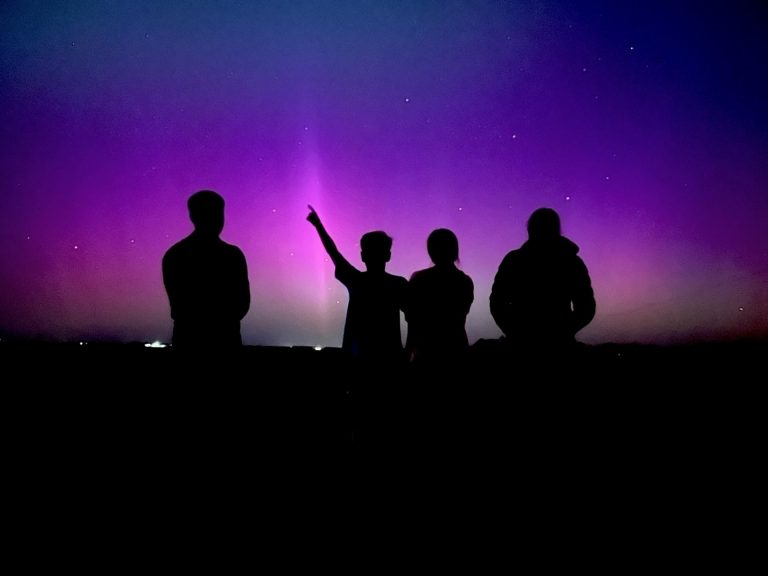By Jennifer Stultz
Tri-County Tribune Editor
jstultz@cherryroad.com
Those in the right place at the right time, with the right view and a phone camera on Friday, May 10 in the Tri-County Tribune coverage area, caught a view of an atmospheric phenomenon called the Northern Lights.
The Northern Lights, or the aurora borealis, are dancing ribbons of light that have captivated people for millennia. Usually associated with visibility only near the northern and southern poles, the light show is really a violent atmospheric event.
According to Space.com, the Northern Lights are created when energized particles from the sun slam into Earth’s upper atmosphere at speeds of up to 45 million mph (72 million kph), but the earth’s magnetic field protects humans from the onslaught.
As Earth’s magnetic field redirects the particles toward the poles the dramatic process becomes this atmospheric phenomenon that dazzles and fascinates scientists and sky watchers alike.
For Eric and Amy Clarkson and their children of Pratt, the chance to see the Northern Lights last Friday night happened a bit by chance, but they were completely enthralled.
“I had heard about it through a solar alert online and knew that something like this could happen,” said Amy Clarkson. “It wasn’t until a friend of our daughter Tess sent her a picture of it from the Pratt County Lake that we actually went out to see for ourselves, however.”
The Clarksons drove out of Pratt city limits to a rural road not far from the ethanol plant north of town.
“Once we got out of the car, turned off the lights and our eyes adjusted, then it was just oohs and ahhs,” she said. “It was amazing to have this right here in Kansas; on par for what we have seen on many of our crazy adventures. It was spectacular.”
Clarkson said the key to seeing all the colors was having an iphone, or any cell phone really, and holding it up to look through the live view.
According to Frédéric Clette, solar physicist, World Data Center Sunspot Index and Long-term Solar Observations (SILSO) and Solar Influence Data analysis Center (SIDC), the bright colors of the northern lights are dictated by the chemical composition of Earth’s atmosphere.
Red aurorae are produced by nitrogen molecules, and green is produced by oxygen molecules.
The Northern Lights, spread around the Earth by a constant solar wind combined with the sun’s emissions, go through a roughly 11-year cycle of activity. Sometimes there’s a lull, but other times, there are vast storms that bombard Earth with extreme amounts of energy. This is when the Northern Lights are at their brightest and most frequent.
Clete said the Earth is currently approaching solar maximum which is predicted to peak between early 2024 to late 2025. Scientists cannot pinpoint exactly when solar maximum will occur but know when it’s on its way.
“By synthesizing all published predictions, the time interval for the cycle maximum ranges from late 2023 to early 2025,” Clete told Space.com in an email.
NOAA’s Space Weather Prediction Center (SWPC) recently issued a revised prediction that suggests solar maximum may occur between January and October 2024.




